Abstract
Two light-sensitive analogs of 2,4-dichlorophenoxyacetic acid, namely 4-azido-2-chlorophenoxyacetic acid and 3-azido-5-chlorophenoxyacetic acid, have been synthesized for use as auxin photoaffinity labels. The preparation and biological activity of the compounds are described. Both contain the photolabile azido group; the 2,4-substituted compound shows auxin activity and the 3,5-substituted compound does not. These photoaffinity analogs of 2,4-dichlorophenoxyacetic acid may be useful in the identification of the auxin receptor molecules in plant cells and eventually of the receptor sites within these molecules.
Full text
PDF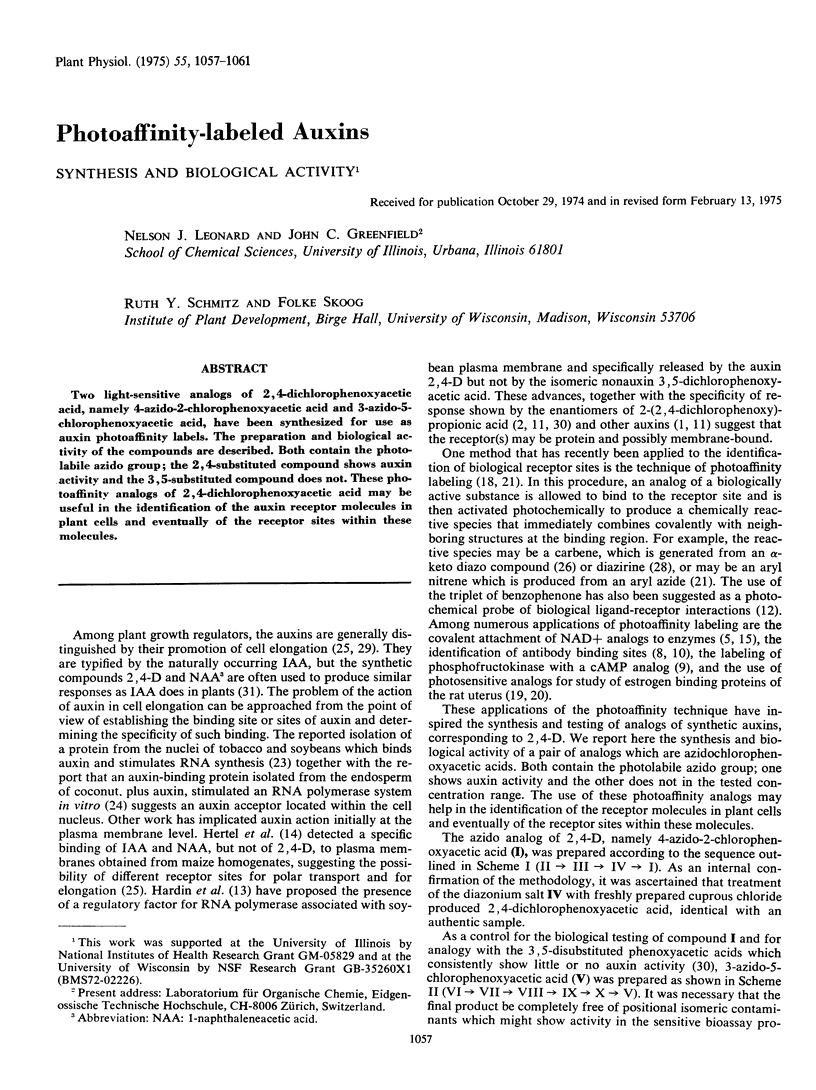
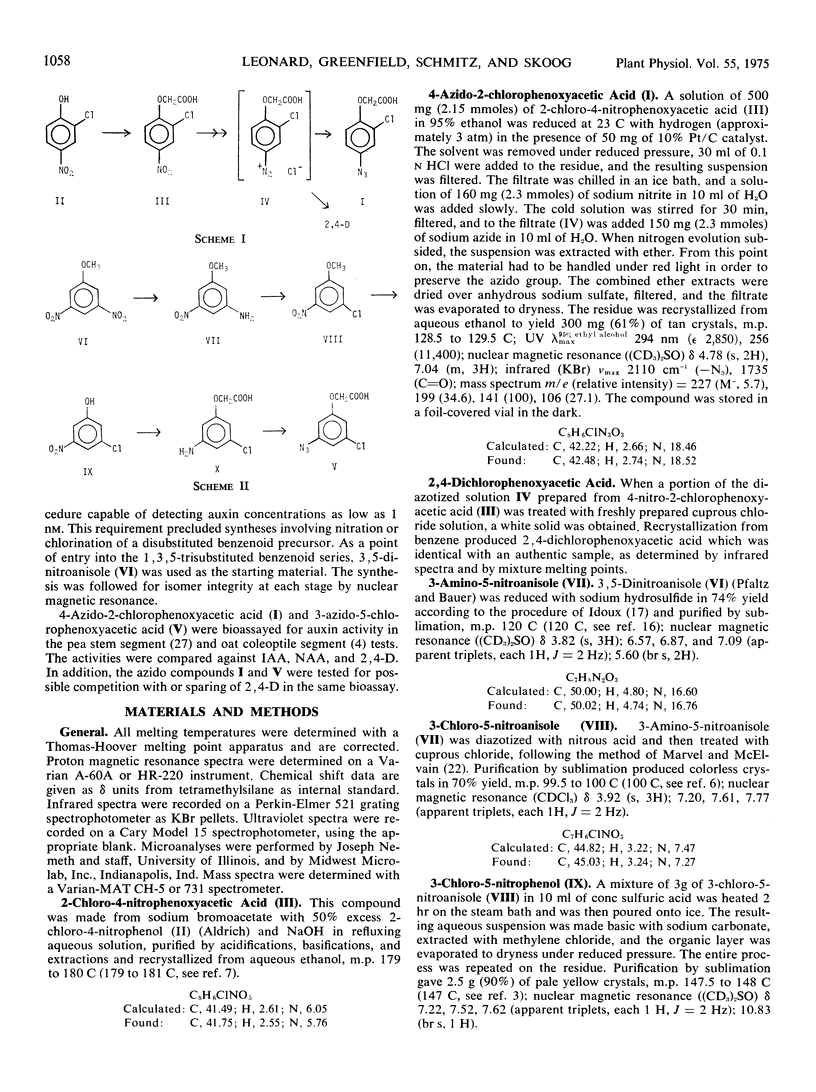
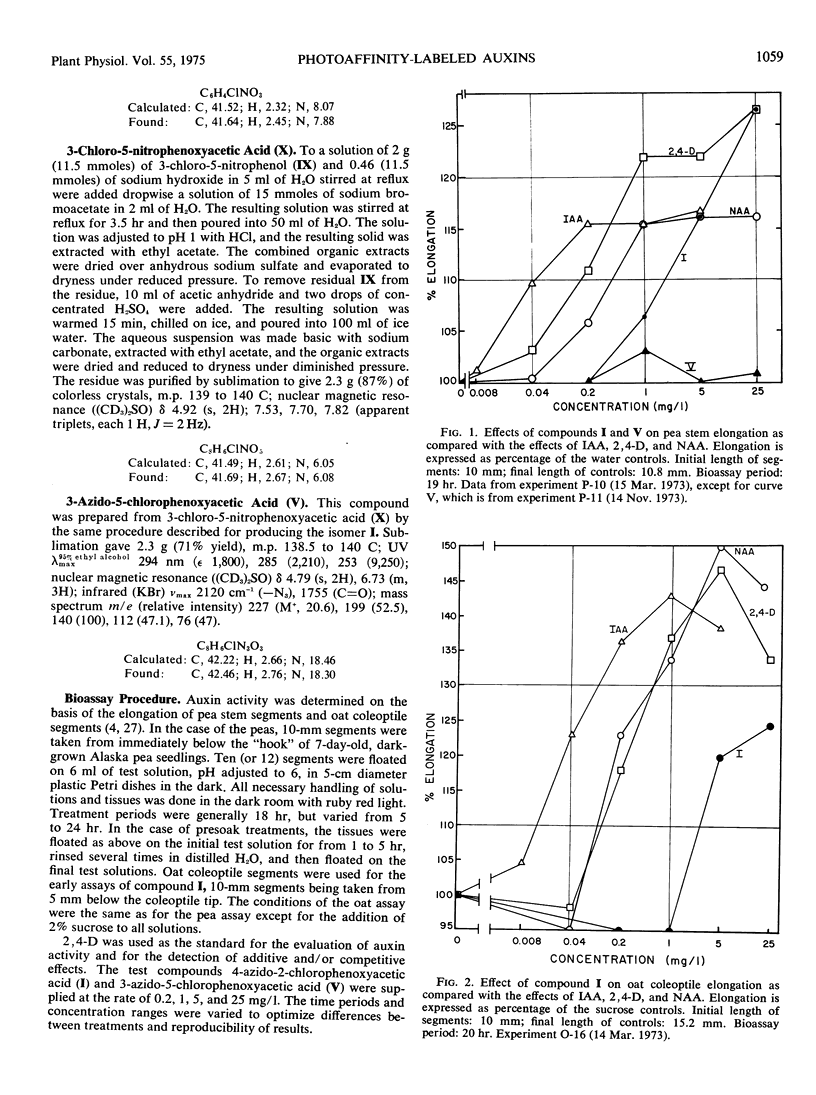
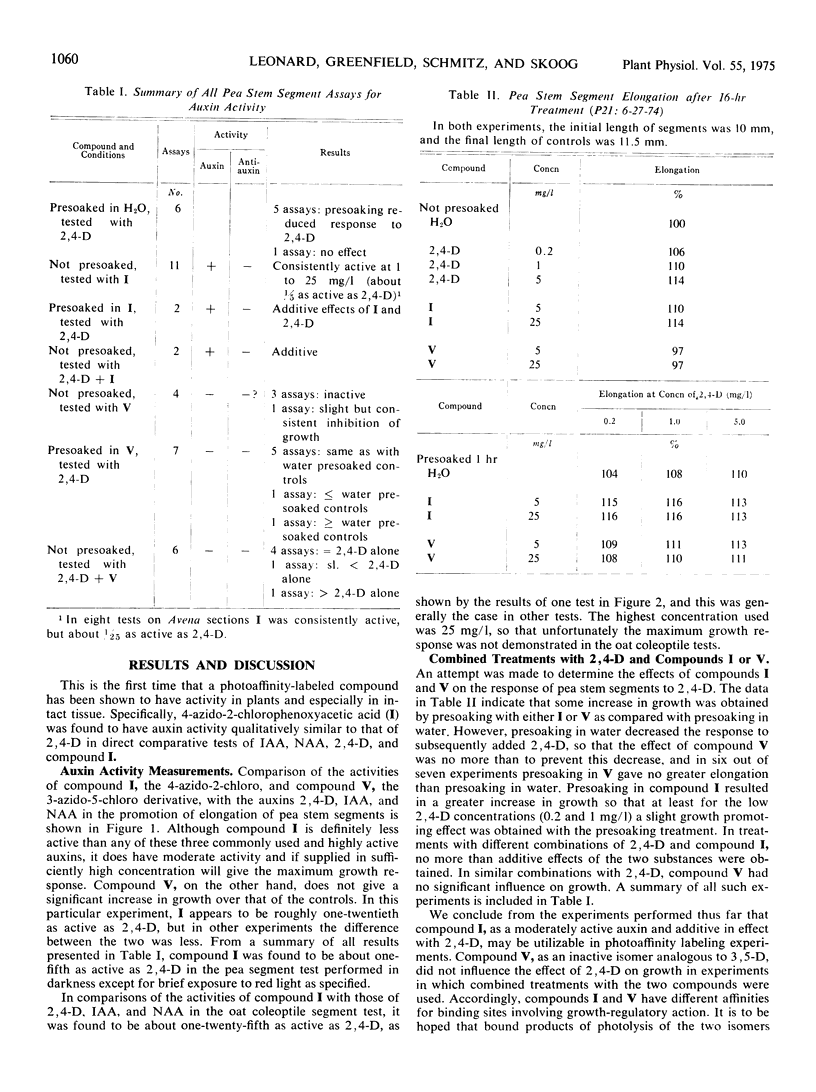
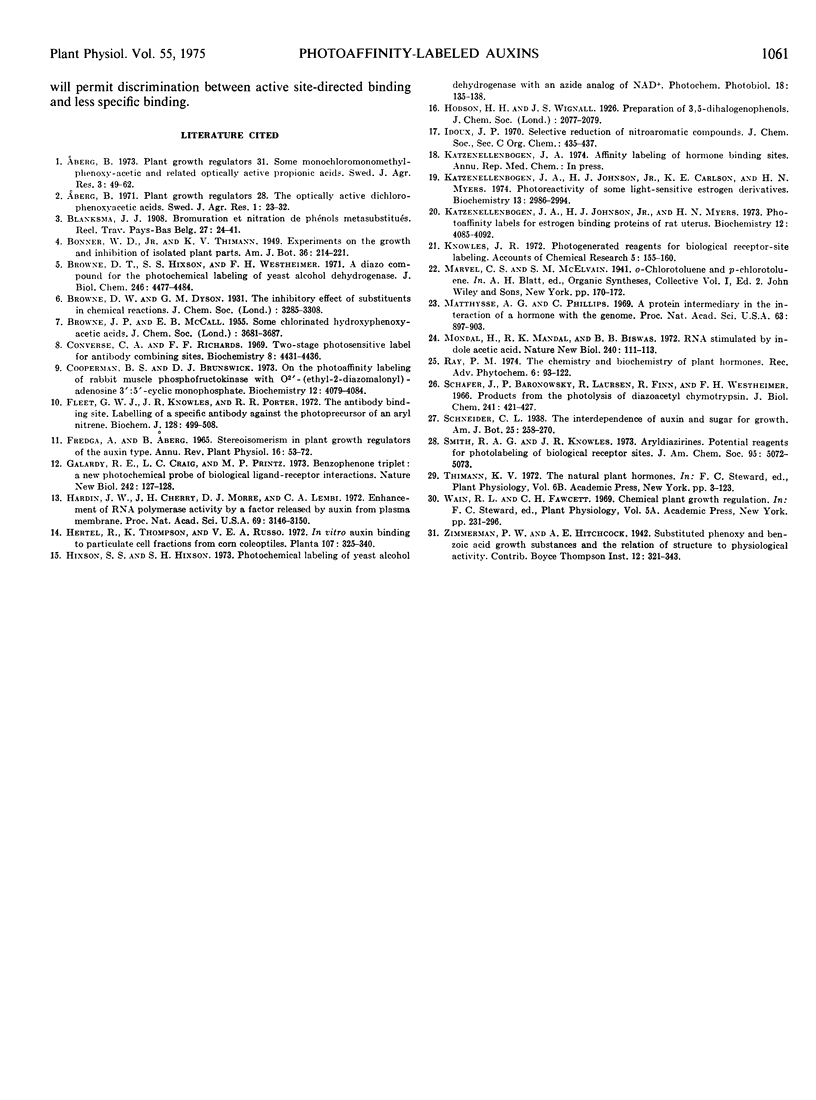
Selected References
These references are in PubMed. This may not be the complete list of references from this article.
- Browne D. T., Hixson S. S., Westheimer F. H. A diazo compound for the photochemical labeling of yeast alcohol dehydrogenase. J Biol Chem. 1971 Jul 25;246(14):4477–4484. [PubMed] [Google Scholar]
- Converse C. A., Richards F. F. Two-stage photosensitive label for antibody combining sites. Biochemistry. 1969 Nov;8(11):4431–4436. doi: 10.1021/bi00839a031. [DOI] [PubMed] [Google Scholar]
- Cooperman B. S., Brunswick D. J. On the photoaffinity labeling of rabbit muscle phosphofructokinase with O2'-(ethyl-2-diazomalonyl)adenosine 3':5'-cyclic monophosphate. Biochemistry. 1973 Oct 9;12(21):4079–4084. doi: 10.1021/bi00745a009. [DOI] [PubMed] [Google Scholar]
- Fleet G. W., Knowles J. R., Porter R. R. The antibody binding site. Labelling of a specific antibody against the photo-precursor of an aryl nitrene. Biochem J. 1972 Jul;128(3):499–508. doi: 10.1042/bj1280499. [DOI] [PMC free article] [PubMed] [Google Scholar]
- Galardy R. E., Craig L. C., Printz M. P. Benzophenone triplet: a new photochemical probe of biological ligand-receptor interactions. Nat New Biol. 1973 Mar 28;242(117):127–128. doi: 10.1038/newbio242127a0. [DOI] [PubMed] [Google Scholar]
- Hardin J. W., Cherry J. H., Morré D. J., Lembi C. A. Enhancement of RNA polymerase activity by a factor released by auxin from plasma membrane. Proc Natl Acad Sci U S A. 1972 Nov;69(11):3146–3150. doi: 10.1073/pnas.69.11.3146. [DOI] [PMC free article] [PubMed] [Google Scholar]
- Katzenellenbogen J. A., Johnson H. J., Jr, Carlson K. E., Myers H. N. Photoreactivity of some light-sensitive estrogen derivatives. Use of an exchange assay to determine their photointeraction with the rat uterine estrogen binding protein. Biochemistry. 1974 Jul 2;13(14):2986–2994. doi: 10.1021/bi00711a031. [DOI] [PubMed] [Google Scholar]
- Katzenellenbogen J. A., Johnson H. J., Jr, Myers H. N. Photoaffinity labels for estrogen binding proteins of rat uterus. Biochemistry. 1973 Oct 9;12(21):4085–4092. doi: 10.1021/bi00745a010. [DOI] [PubMed] [Google Scholar]
- Matthysse A. G., Phillips C. A protein intermediary in the interaction of a hormone with the genome. Proc Natl Acad Sci U S A. 1969 Jul;63(3):897–903. doi: 10.1073/pnas.63.3.897. [DOI] [PMC free article] [PubMed] [Google Scholar]
- Mondal H., Mandal R. K., Biswas B. B. RNA stimulated by indole acetic acid. Nat New Biol. 1972 Nov 22;240(99):111–113. doi: 10.1038/newbio240111a0. [DOI] [PubMed] [Google Scholar]
- Shafer J., Baronowsky P., Laursen R., Finn F., Westheimer F. H. Products from the photolysis of diazoacetyl chymotrypsin. J Biol Chem. 1966 Jan 25;241(2):421–427. [PubMed] [Google Scholar]
- Smith R. A., Knowles J. R. Letter: Aryldiazirines. Potential reagents for photolabeling of biological receptor sites. J Am Chem Soc. 1973 Jul 25;95(15):5072–5073. doi: 10.1021/ja00796a062. [DOI] [PubMed] [Google Scholar]


